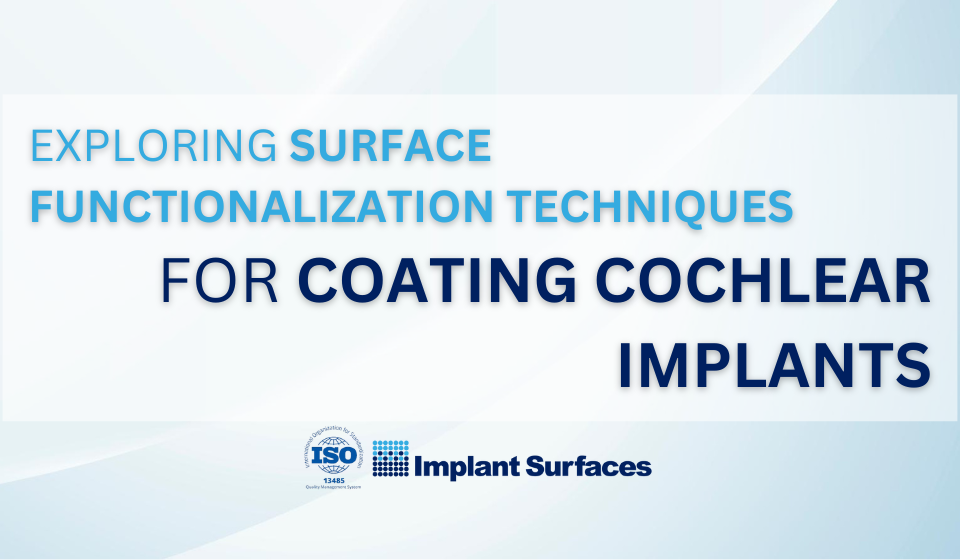
Advancing Brain-Machine Interfaces: Innovations in Surface Coatings for Implantable Neural Electrodes
May 8, 2024
Exploring Surface Functionalization Techniques for Coating Cochlear Implants
May 10, 2024Biomimicry, the practice of emulating nature’s designs and processes to solve human challenges, has emerged as a transformative approach in implant surface engineering. By drawing inspiration from the structural and functional characteristics of natural tissues, researchers and engineers have developed innovative strategies to create biomimetic implant surfaces with enhanced biointegration and performance.
Understanding Biomimetic Design:
Biomimetic design involves the replication of biological structures and functions to engineer materials and devices that seamlessly integrate with the human body. In the context of implant surfaces, biomimicry encompasses the emulation of key features such as surface topography, chemistry, and mechanical properties observed in natural tissues.
Mimicking Nature’s Blueprint:
One of the fundamental principles driving biomimetic implant design is the replication of hierarchical structures found in biological tissues. By leveraging advanced fabrication techniques such as additive manufacturing and nanotechnology, researchers can precisely control the surface morphology of implants at multiple length scales, mimicking the intricate patterns observed in bone, cartilage, and other tissues.
Enhancing Biointegration:
Biomimetic implant surfaces offer several advantages for promoting biointegration and tissue regeneration. By replicating the nanoscale roughness and porosity of native tissues, biomimetic coatings provide optimal substrates for cell adhesion, proliferation, and differentiation. Furthermore, biomimetic surfaces can modulate cellular responses and signaling pathways, promoting the formation of functional tissue interfaces and reducing the risk of implant-related complications.
Applications Across Implantology:
The application of biomimetic design principles extends across various fields of implantology, including orthopedics, dentistry, and neural interfaces. In orthopedic implants, biomimetic coatings enhance osseointegration and implant stability, leading to improved long-term outcomes for patients undergoing joint replacement surgery. Similarly, in dental implants, biomimetic surfaces promote soft tissue integration and minimize peri-implant inflammation, ensuring optimal aesthetics and functionality.
Future Perspectives:
As research in biomimetic implant surfaces continues to advance, future developments hold the promise of even greater clinical benefits. Emerging technologies such as bioactive coatings, smart materials, and personalized implants are poised to revolutionize the field of implantology, ushering in a new era of patient-centered care and enhanced treatment outcomes.
Conclusion:
Biomimetic implant surfaces represent a groundbreaking approach to enhancing biointegration, functionality, and longevity in implant therapy. By harnessing the inherent wisdom of nature, researchers and clinicians can unlock new possibilities for improving patient care and quality of life. As the journey towards biomimicry unfolds, the future holds boundless opportunities for innovation and discovery in the field of implant surfaces.




